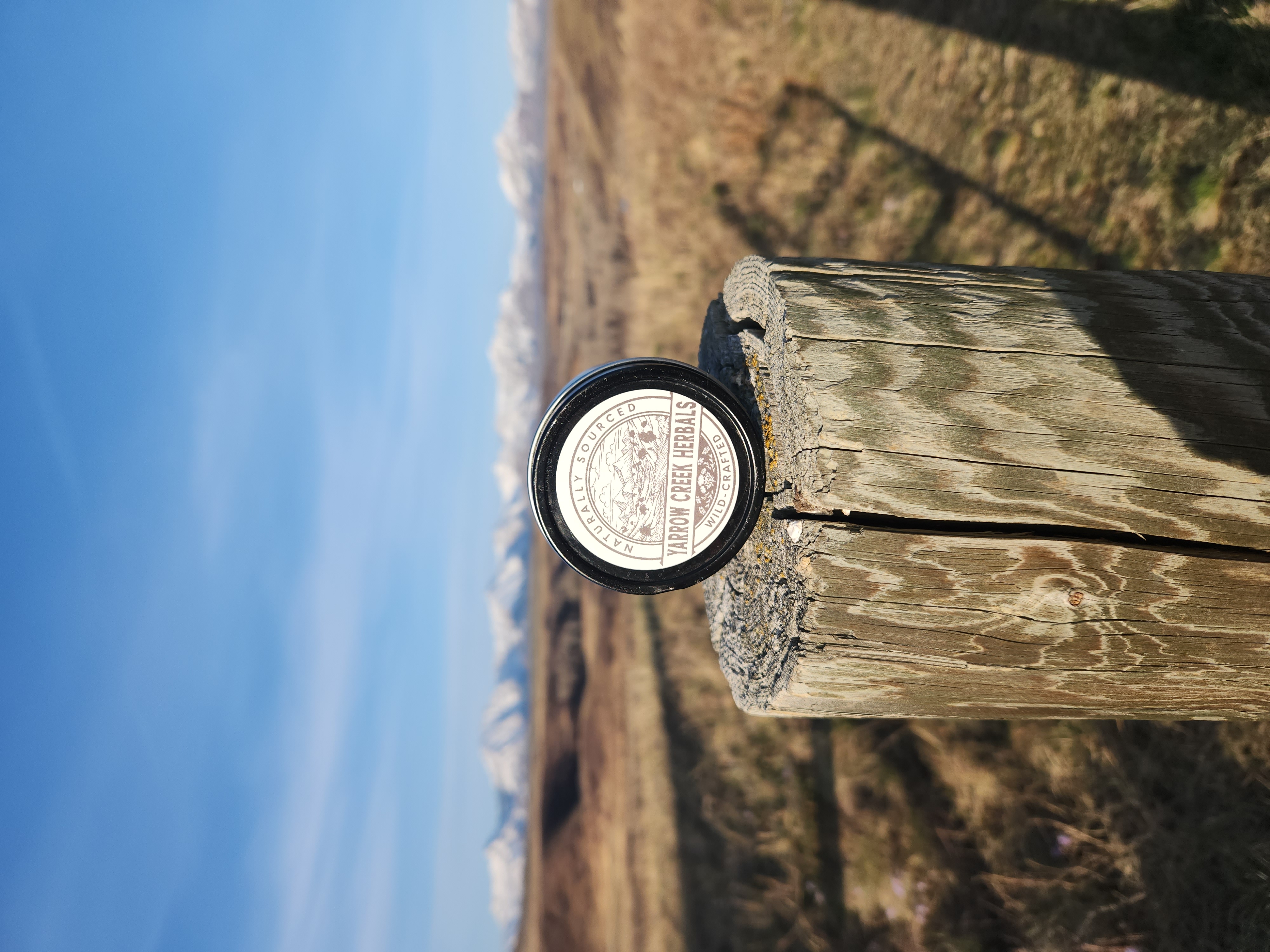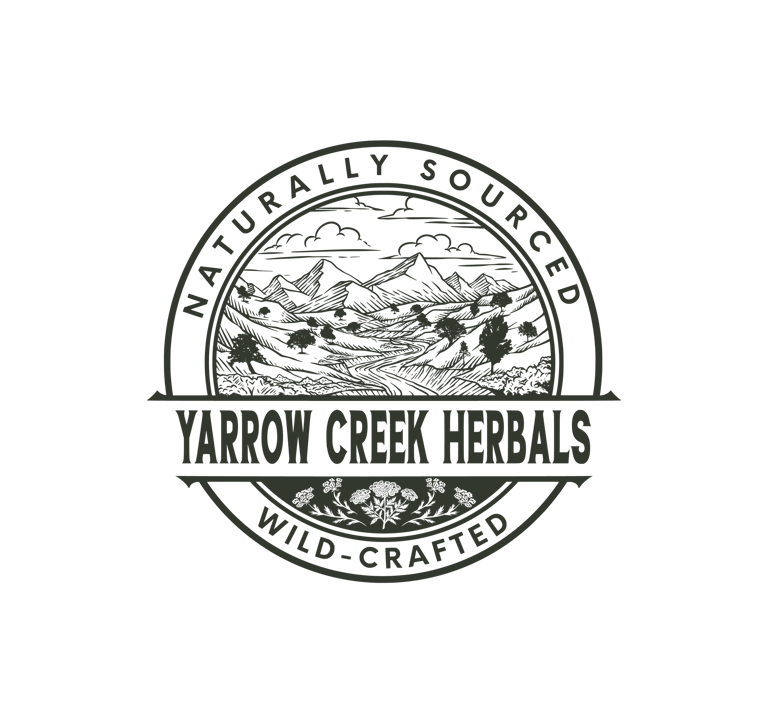
Muscle & Joint Pain Salve
CA$22.00
Herbal Highlights & Research
Arnica (Arnica montana)
• Clinical studies show that arnica gel can ease pain and stiffness in hand osteoarthritis, working about as well as ibuprofen gel. https://pubmed.ncbi.nlm.nih.gov/17318618/
• A placebo-controlled study found that a 20% arnica ointment helped reduce bruising after cosmetic laser treatments. https://pubmed.ncbi.nlm.nih.gov/20412090/
Traditional use: Applied externally for bruises, sprains, sore muscles, and swelling.
Ginger (Zingiber officinale)
• A topical 3% ginger gel was shown to ease knee pain from osteoarthritis and improve movement, with results similar to a standard pain gel. https://pubmed.ncbi.nlm.nih.gov/29911849/
• Topical use of ginger extract ointment has been shown to reduce pain and support healing in skin incisions. https://pmc.ncbi.nlm.nih.gov/articles/PMC10663440/
Traditional use: Warm poultices and compresses to boost circulation and bring comfort to sore areas.
St. John’s Wort (Hypericum perforatum)
• In a clinical trial, a Hypericum ointment improved healing after cesarean surgery, reducing redness, swelling, and pain. https://pubmed.ncbi.nlm.nih.gov/20064022/
• The active compound hyperforin is known to calm inflammation and soothe nerve endings. https://pubmed.ncbi.nlm.nih.gov/12445866/ https://pmc.ncbi.nlm.nih.gov/articles/PMC3108608/
Traditional use: Oils and salves for nerve pain, sciatica, and minor burns.
Yarrow (Achillea millefolium)
• A human trial found that yarrow oil reduced irritation and strengthened the skin barrier. https://pubmed.ncbi.nlm.nih.gov/28163113/
• Lab studies show yarrow extracts help fibroblast cells grow and support wound closure. https://pubmed.ncbi.nlm.nih.gov/26543303/
Traditional use: Called “staunchweed” for its use on inflammation, bruises, and wounds.
Rosemary (Rosmarinus officinalis / Salvia rosmarinus)
• In a clinical study, rosemary essential oil reduced pain levels and flare-ups in chronic muscle and joint conditions. https://pmc.ncbi.nlm.nih.gov/articles/PMC5684790/
• Reviews confirm rosemary’s antioxidants and anti-inflammatory compounds benefit muscles and joints. https://pmc.ncbi.nlm.nih.gov/articles/PMC9959659/
Traditional use: Stimulating rubs and liniments for circulation and sore joints.
Mint (Mentha spp., menthol)
• Menthol activates cooling receptors in the skin, which helps block pain signals and create a soothing effect. https://pmc.ncbi.nlm.nih.gov/articles/PMC9580369/
• A crossover study found menthol reduced pain in workers with carpal tunnel syndrome. https://pmc.ncbi.nlm.nih.gov/articles/PMC4178917/
Traditional use: Cooling compresses and oils for aches, headaches, and tension.
Carrier Oils & Base
Sweet Almond Oil (Prunus dulcis)
• Almond oil is a gentle emollient that supports hydration and skin barrier repair. https://pmc.ncbi.nlm.nih.gov/articles/PMC5796020/
• A randomized controlled trial found that almond oil massage reduced the incidence of pressure ulcers in patients in intensive care units. https://pubmed.ncbi.nlm.nih.gov/32379165/
Traditional use: Massage oil to soften dry skin and help herbs absorb.
Coconut Oil (Cocos nucifera)
• Virgin coconut oil has been shown to improve hydration and strengthen the skin barrier. https://pubmed.ncbi.nlm.nih.gov/15724344/
• In children with eczema, coconut oil improved symptoms and barrier health. https://pubmed.ncbi.nlm.nih.gov/24320105/
Traditional use: A protective oil that nourishes skin and carries herbs deeper.
Castor Oil (Ricinus communis)
• Ricinoleic acid, the main fatty acid in castor oil, has anti-inflammatory and pain-relieving effects. https://pubmed.ncbi.nlm.nih.gov/11200362/
• Multiple studies confirm castor oil helps ease pain when used topically. https://pubmed.ncbi.nlm.nih.gov/11050297/
Traditional use: Thick oil used in poultices to “draw” herbs into sore tissues.
Olive Oil (Olea europaea)
• Research shows olive oil supports skin repair and provides antioxidant protection. https://pmc.ncbi.nlm.nih.gov/articles/PMC5796020/
Traditional use: A classic base oil of Mediterranean salves, valued for carrying and preserving herbal compounds.
Vitamin E (mixed tocopherols/tocotrienols)
• Human trials show vitamin E helps protect skin from UV damage when applied topically. https://pubmed.ncbi.nlm.nih.gov/21917024/
• Reviews confirm its strong antioxidant activity supports skin health. https://pmc.ncbi.nlm.nih.gov/articles/PMC4976416/
Traditional use: Natural preservative and skin protectant.
Beeswax (Cera alba)
• Beeswax forms a light protective film on the skin, locking in moisture and supporting barrier repair. https://pubmed.ncbi.nlm.nih.gov/36999457/
Traditional use: Provides firmness to salves, seals in moisture, and helps herbs stay in contact with the skin.
Sore muscles and stiff joints are part of life — from long days of work to the ordinary wear of time. Western herbal practice has long turned to specific plants for relief: arnica for swelling and bruises, ginger to warm and move circulation, St. John’s wort to calm nerve-related pain, yarrow to temper inflammation, rosemary to stimulate blood flow, and mint to cool hot, overworked tissue.
These herbs formed the backbone of poultices and liniments for centuries. Here, they’re infused into a base of olive, sweet almond, coconut, and castor oils selected for penetration and glide, then set with beeswax for a breathable seal. A touch of vitamin E offers antioxidant stability for the blend.
Modern research aligns with tradition: these plants contain anti-inflammatory, circulatory, and analgesic constituents that help relieve pain, ease stiffness, and support recovery. Used regularly, this salve helps restore comfort and flexibility to muscles and joints that work hard or carry a heavy load.
How to Use
Massage a small amount into sore muscles or stiff joints 2–3 times daily, or as needed. For best results, apply after warmth (a shower, bath, or warm compress) to encourage circulation and absorption.
Ingredients
Arnica, Ginger, St. John’s wort, Yarrow, Rosemary, Mint, Sweet Almond oil, Coconut oil, Castor oil, Olive oil, Beeswax, Vitamin E.
Safety Note
For external use only. Avoid broken skin. Some herbs in this formula are traditionally cautioned during pregnancy and breastfeeding — use at your discretion. Discontinue use if irritation occurs. Patch test first.
See Disclaimer / Terms and Conditions for shelf life guidelines.
